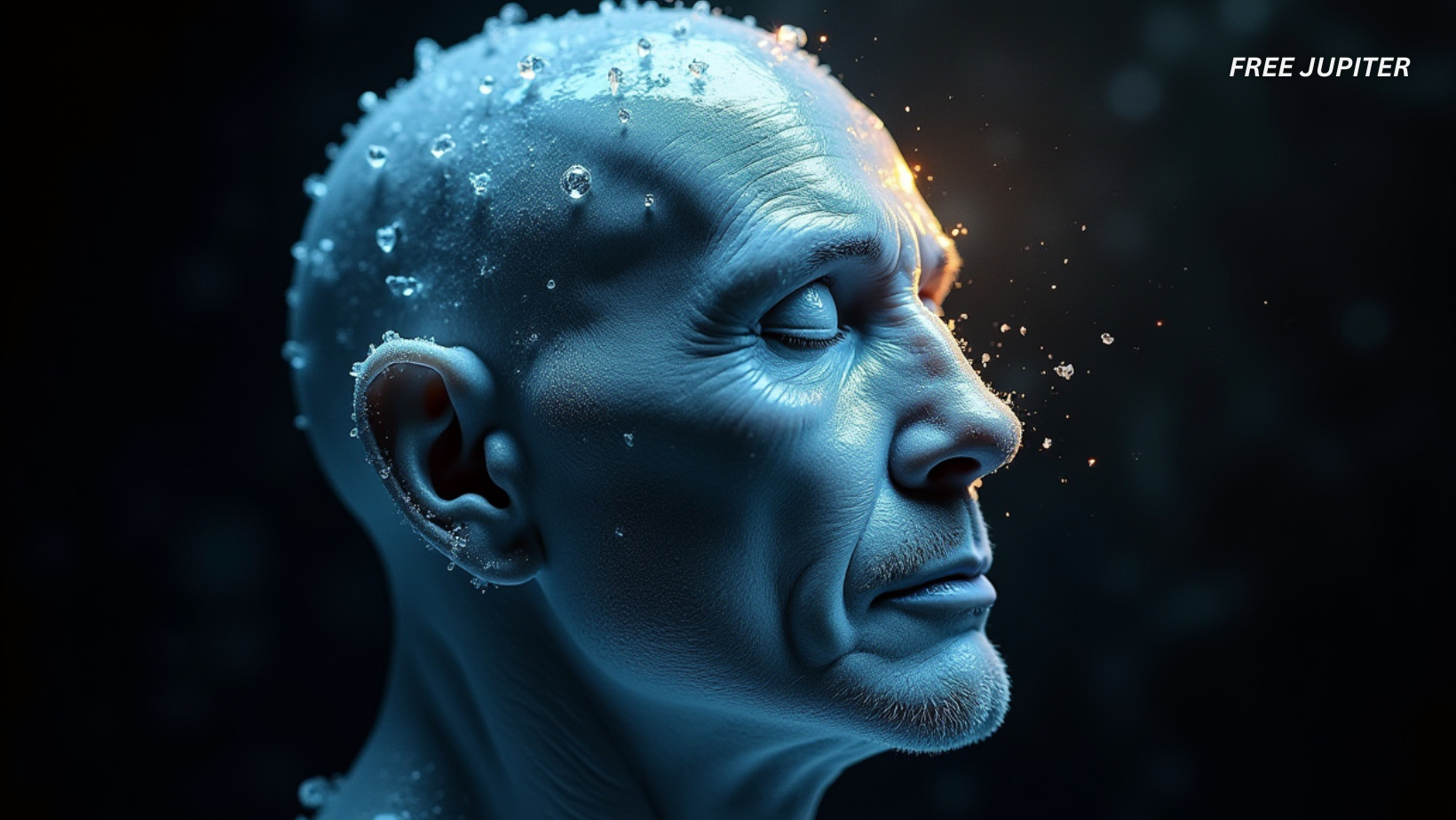Cryonics, often considered a niche blend of speculative science and futuristic hope, has long fascinated those intrigued by the possibility of extending life beyond natural limits. Frequently featured in science fiction, the concept of freezing humans with the aim of reviving them in the distant future has stirred both curiosity and controversy. While fictional characters like Captain America have made comebacks after decades encased in ice, the real-world application of such preservation is far more complex—and far less glamorous.
Though it may sound like an idea pulled straight from the pages of a comic book, there are individuals who have staked their faith—and their remains—on the belief that one day, science will conquer death. The people who have opted for cryopreservation, colloquially called “cryonauts,” envision a future where technological advances will enable the repair of damage caused by disease, aging, and even the freezing process itself. However, the reality of this process, particularly in its early days, has been far from the hopeful narrative often told.
The Beginning of Cryonic Preservation: A Pioneering Case
The story of cryonics began in earnest in the 1960s, during a time when scientific ambition frequently danced on the edge of imagination. Among the earliest known individuals to undergo this process was Dr. James Hiram Bedford, a psychology professor affiliated with the University of California, Berkeley. Bedford passed away from renal cancer on January 12, 1967, but instead of receiving a traditional burial, his body was frozen in hopes that medical advancements would one day restore him to life.
Dr. Bedford’s preservation is often considered a milestone in the history of cryonics. At the time, the procedure lacked the refined techniques that are now standard. His body was injected with dimethyl sulfoxide, a chemical believed to help mitigate ice damage, and then placed on dry ice in a Styrofoam container. Later, he was transferred into a container of liquid nitrogen, where he remains to this day at the Alcor Life Extension Foundation in Arizona—a facility regarded as a leader in modern cryonics.
Though rudimentary by today’s standards, Bedford’s preservation has managed to withstand the passage of decades, primarily due to the dedicated efforts of his family. His wife and son ensured that his body was carefully transferred between facilities over the years, protecting him from the fate that befell many of the other early cryonauts.
Read more: The First Communication Between Two Humans While Dreaming Has Been Achieved – This Is How It Works
A Dark Chapter in Cryonic History
While Bedford’s story offers a semblance of hope, many early attempts at cryonic preservation were marked by gross mishandling and tragic outcomes. One notable case involves Robert Nelson, a television repairman with no formal scientific training, who nevertheless became one of the earliest proponents of cryonics. Operating out of California, Nelson took on the responsibility of preserving several individuals who had signed up for this radical new approach to life extension.
Unfortunately, his lack of expertise and insufficient funding led to a series of catastrophic failures. The first four individuals entrusted to Nelson’s care were not immediately placed in the protective environment of liquid nitrogen. Instead, they were stored on dry ice at a mortuary—far from ideal conditions. One family member, horrified by the circumstances, reclaimed his mother’s remains and stored her in a truck before eventually arranging for a burial.
Eventually, Nelson and the mortician overseeing the bodies attempted to consolidate them into a single cryonic capsule. Complications quickly arose, as the capsule had already been occupied by another body. A desperate attempt was made to fit all four corpses into the container, a process that took an entire night and likely resulted in significant thawing and tissue damage.
As financial support dwindled and payments from families stopped arriving, Nelson could no longer afford the upkeep. The capsule was left unmonitored, and the bodies inside were allowed to thaw and decompose in a cemetery vault. Another group of bodies in a separate capsule suffered a similar fate due to a malfunction that went unnoticed for too long. Though they were refrozen later, irreversible damage had already occurred.
Among the most tragic cases was that of a six-year-old boy, whose body had initially been preserved with care. Unfortunately, rapid freezing caused severe internal cracking, rendering the remains unsuitable for long-term preservation. The grieving father ultimately retrieved and buried his son. Another body, already partially decomposed due to a delay of ten months before freezing, was stored in the boy’s capsule, but this too ended in decay and thawing.
Nelson would later admit to a series of missteps, financial troubles, and poor decision-making, all of which contributed to the irreversible losses. His clients, though subjected to horrifying outcomes, were still somewhat more fortunate than those placed in an underground New Jersey facility. The vault there suffered from design flaws, such as uninsulated pipes, which caused the bodies inside to repeatedly thaw, shift, and refreeze. Over time, their remains became fused to the walls of their containers, requiring full thawing just to be moved—an act that only hastened their deterioration. When the equipment failed again, the bodies decomposed entirely into what was described as a “plug of fluids.” Eventually, they were buried by the caretakers.
Read more: Man Leaves The Hospital With Totally Artificial Heart In World-First
The Scientific Struggle of Preservation
The process of cryopreservation is fundamentally rooted in real science. In medical settings, cryopreservation is commonly used to preserve blood, reproductive cells, and even entire organs for transplant. Nature itself provides examples of successful cryopreservation, such as in the case of the Canadian wood frog, which survives winters by allowing its body to freeze solid.
However, preserving a complex organism like a human being poses an entirely different challenge. The risks associated with freezing a human body are numerous. At the heart of the issue is the damage caused by ice crystals, which can rupture cell membranes and destroy tissue structure. Vitrification—a technique developed after many failed attempts—was introduced to combat this. It replaces body fluids with ice-resistant chemicals, allowing the body to solidify without forming destructive ice crystals. Yet even this method is not without limitations.
Dr. Shannon Tessier, a cryobiologist affiliated with Harvard University and Massachusetts General Hospital, has openly stated that no current scientific method allows for the successful freezing of a human body without catastrophic damage. According to her, even small samples of living human tissue cannot be frozen without obliteration. Cell membranes rupture, internal structures collapse, and the tissue becomes effectively nonviable. There is, she says, no evidence to suggest that anything is truly being preserved in a meaningful way.
Lessons from the Cold: What Autopsies Revealed
In 1983, Alcor conducted an internal study involving the partial thawing of three cryonauts. These individuals had been decapitated during the preservation process, as some proponents believe only the head must be saved—under the assumption that future technologies will be able to regenerate bodies.
The thawing process revealed grim findings. Two of the heads, as they warmed, began to crack through their skin and subcutaneous fat. Ruptured blood vessels were observed, and deeper examination revealed widespread damage to major organs and arteries. The heart, spleen, intestines, and lungs all showed signs of structural compromise. The third specimen, thawed at a slower pace, appeared better on the outside, but suffered even greater internal destruction. Fractures in the heart, severed organs, and a snapped spinal cord painted a stark picture of what cryonic preservation currently entails.
These results underscore the profound medical challenges that would face any hypothetical future attempt at revival. Fixing such extensive damage may not be possible using conventional healing techniques. Instead, complete reconstruction—organ by organ, cell by cell—might be required. It is a task that no known technology, present or emerging, has come close to achieving.
Read more: Humans Actually Glow in the Dark Too, But It’s Just Too Weak for Your Eyes to See
A Glimpse Into Tomorrow: Hope, Speculation, and the Human Spirit
Despite these grim details, cryonics remains a field that continues to attract attention. The idea of transcending death, of living far beyond one’s natural lifespan, holds undeniable appeal. For many, the remote possibility of revival—no matter how implausible—offers a comfort greater than the certainty of burial or cremation.
Modern cryonics organizations, such as Alcor, have since evolved their protocols and infrastructure. Facilities are now equipped with sophisticated monitoring systems, advanced vitrification techniques, and long-term maintenance plans. Their goal is no longer just to freeze a body, but to preserve it in the highest possible quality for as long as needed.
Yet even with these improvements, one unchanging truth remains: the science to bring a cryopreserved human back to life does not yet exist. The frozen wait, suspended in time, their fate bound to the hope that future generations may one day wield tools capable of healing what has been broken by death—and by ice.
Until that distant day arrives, if it ever does, the cryonauts will continue to lie silently, entombed in steel and nitrogen, their stories caught between science fiction and science fact. Their preservation stands as both a tribute to human imagination and a reminder of how far we have yet to go.










